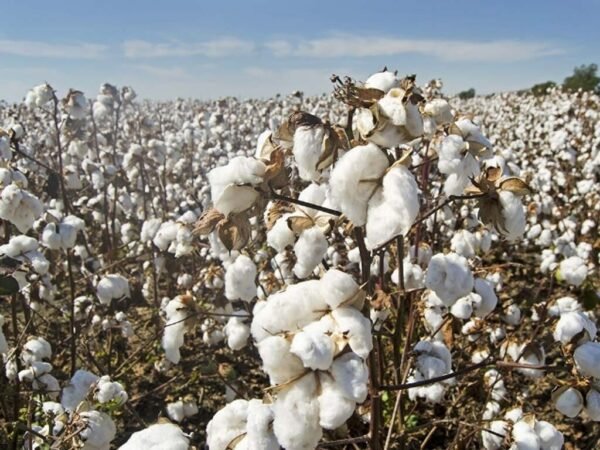Early-grown cotton: striking back at thrips

17 March 2024
Published in: Business Recorder
Firstly, cultivating cotton isn’t overly challenging if farmers utilize appropriate resources at the right moments and manage it with a wise strategy. Effective management strategies are crucial for optimal cotton crop growth and yield. It’s common knowledge that cotton is vulnerable to various pests and diseases. Early cotton cultivation presents challenges such as slow growth and susceptibility to pests like thrips. Factors like low temperatures can delay early cotton growth, sometimes requiring additional growing time, typically around 10 to 12 days or even longer.
Slow plant growth coincides with the hatching of thrips, harmful insects that can significantly impact cotton crops. Thrips pose a persistent threat to cotton crops year-round, with a heightened risk to early-grown crops. Effective control measures are necessary to mitigate this risk. Adequate seed treatment offers protection against cotton sap-sucking insects, particularly thrips, for approximately 30 to 40 days, safeguarding plants until they develop at least three leaves.
Growers should opt for a mixture of Imidacloprid and Tebuconazole, applying 10 ml per kg of seed for seed treatment. After treating the cotton seed, they should be dried in a shaded area before planting, ensuring they are lightly covered with soil. Thrips infestations are prevalent in early cotton-growing regions of Punjab and Sindh, emphasizing the importance of proactive management strategies.
It’s important to note that when temperatures are very low, meaning it’s cold, thrips aren’t active and their impact is minimal. However, as temperatures rise, thrips become more active and can excessively attack early cotton crops.
Thrips tend to transfer from crops like okra, brinjal, tobacco, cauliflower, or cabbage to cotton crops, with research showing that onion crops are particularly prone to transmitting thrips. Thrips typically attack young cotton leaves, around 6 to 7 days old, as these are their preferred food source. This means they tend to attack more during the seedling stage of cotton growth.
We need to watch out for thrips when the cotton plant develops its first or second leaf. Thrips are small insects, about 1-2 mm long, and are yellow or black-striped. Both young and adult thrips feed on the underside of young and new-born cotton leaves by sucking their juices.
During a severe thrips attack, leaves can turn silver and the plant’s growth may halt, with leaves becoming twisted or crumpled and curling upwards. These symptoms typically manifest in a period of 3 to 4 days following a thrips attack. In severe cases, the plant may shed its leaves.
For small crops, such as those in the seedling stage, the economic threshold level (ETL) for thrips is 8 nymphs or adults per leaf. For larger crops, around 3- to 4-month-old, the ETL is 10 adults or nymphs per leaf. It’s important to note that thrips undergo between 5 to 8 generations in total.
Female thrips lay eggs on the underside of leaves and tender stems, often not visible to the naked eye. Each female can lay between 60 to 100 eggs, which typically hatch within 5 to 10 days. The nymph thrips’ life cycle is influenced by temperature; at higher temperatures, it completes in 10 to 12 days, whereas at lower temperatures, it may prolong. The nymph undergoes 4 instars before maturing, with each instar lasting 5 to 10 days.
Additionally, biopesticides such as neem and tobacco can be applied based on entomologists’ recommendations. Consulting with an entomologist can provide more insights and tailored strategies for biological control. Crop rotation is another effective approach to control thrips’ populations over time by disrupting their lifecycle and reducing their preferred environments.
When thrips’ infestations surpass economic damage thresholds (typically 8 to 10 per leaf), chemical control becomes necessary. For instance, spraying Spinetoram (60ml) or Chlorfenapyr (125ml) mixed with 100 liters of water per acre can be effective. By implementing these integrated pest management strategies, farmers can mitigate thrips’S infestations and safeguard their cotton crops effectively.
Cotton cultivation plays a crucial role in economic stability, providing a pathway out of financial challenges. We hope for divine blessings upon our farmers, elevating their income and fostering stability in the country’s economy.





